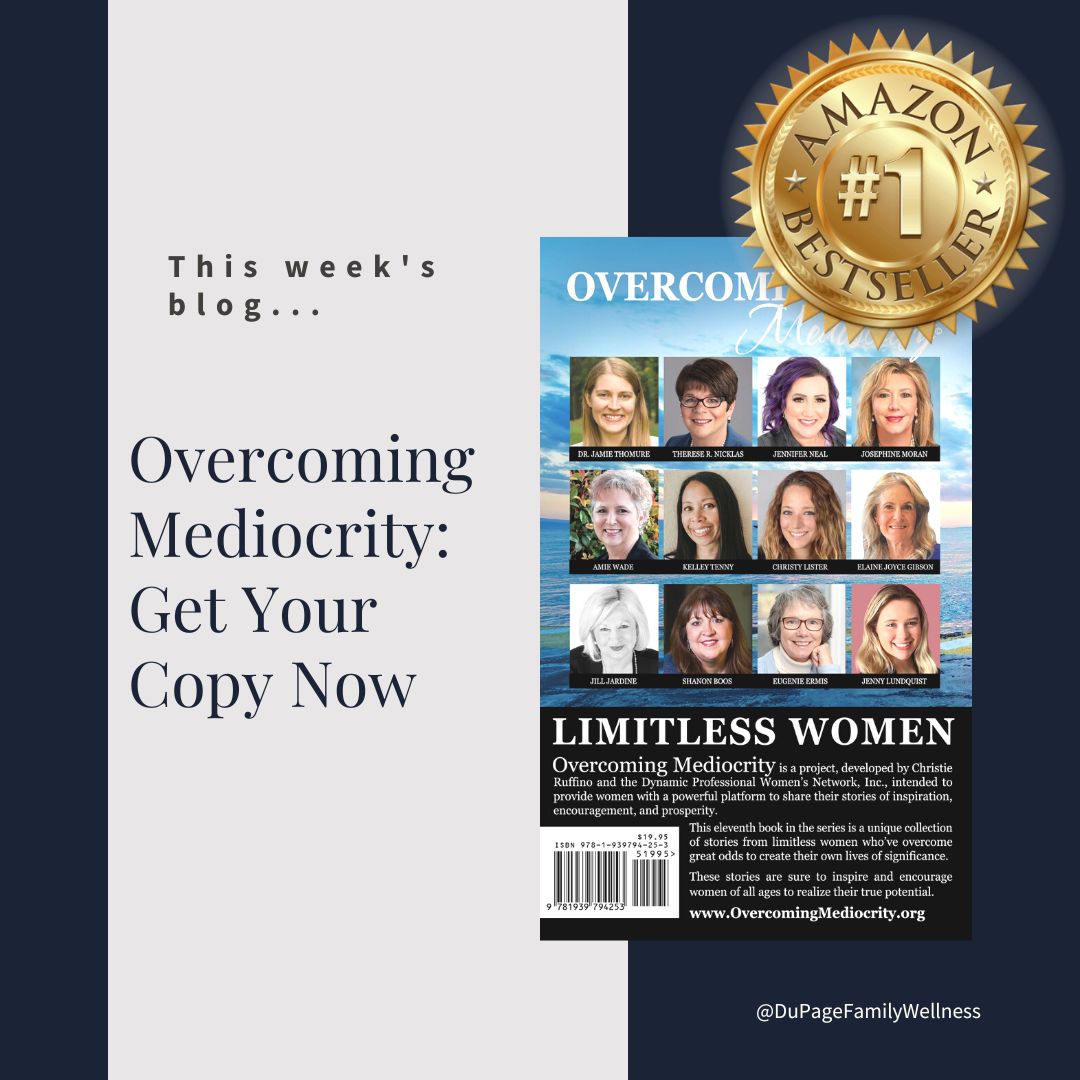 It’s been nine months since “Overcoming Mediocrity” was first published. It’s weird to think that I am a published author. I was honored to share the story of discovering my passion along with 20 other women of influence.
It’s been nine months since “Overcoming Mediocrity” was first published. It’s weird to think that I am a published author. I was honored to share the story of discovering my passion along with 20 other women of influence.
The book is designed to inspire you to find what brings you life and help you step into a life driven by your passion. Sometimes the road to living a fulfilling life is straightforward, but more often than not it is filled with bumps and turns along the way.
My story begins as a child when my family struggled with insulin issues. The series of events that followed eventually led me to find my passion in life.
Here is a little excerpt from my story…
“Growing up my grandpa was one of my favorite people. He was quite the jokester and was always trying to pull a fast one on me. My family went to his house on weekends, and he always made me feel like the most special girl in the world (other than my sister who I’d like to think was a close second).
One evening, as we were preparing dinner my grandfather started acting funny. He was pale and seemed shaky. His words were slurred and didn’t seem to make sense. I didn’t know why my grandpa, who was always so strong, was acting so strange. It was scary!
My grandma ran over to the refrigerator, grabbed the orange juice, and poured him a cup. A few minutes later, Grandpa was back to his normal self.
“What happened?” I asked. I knew my grandpa was a type one diabetic, but I had never known what that meant.”
From here the universe led me to discover my passion. I hope you’ll enjoy reading the rest of my story, but even more than that, I hope you’ll let our stories inspire you to find your passion and live your best life!
Dr. Jamie
P.S. If you are interested in getting your own copy of Overcoming Mediocrity send me a quick message asking me to set one aside for you. We can schedule a time for you to pick it up in the office.
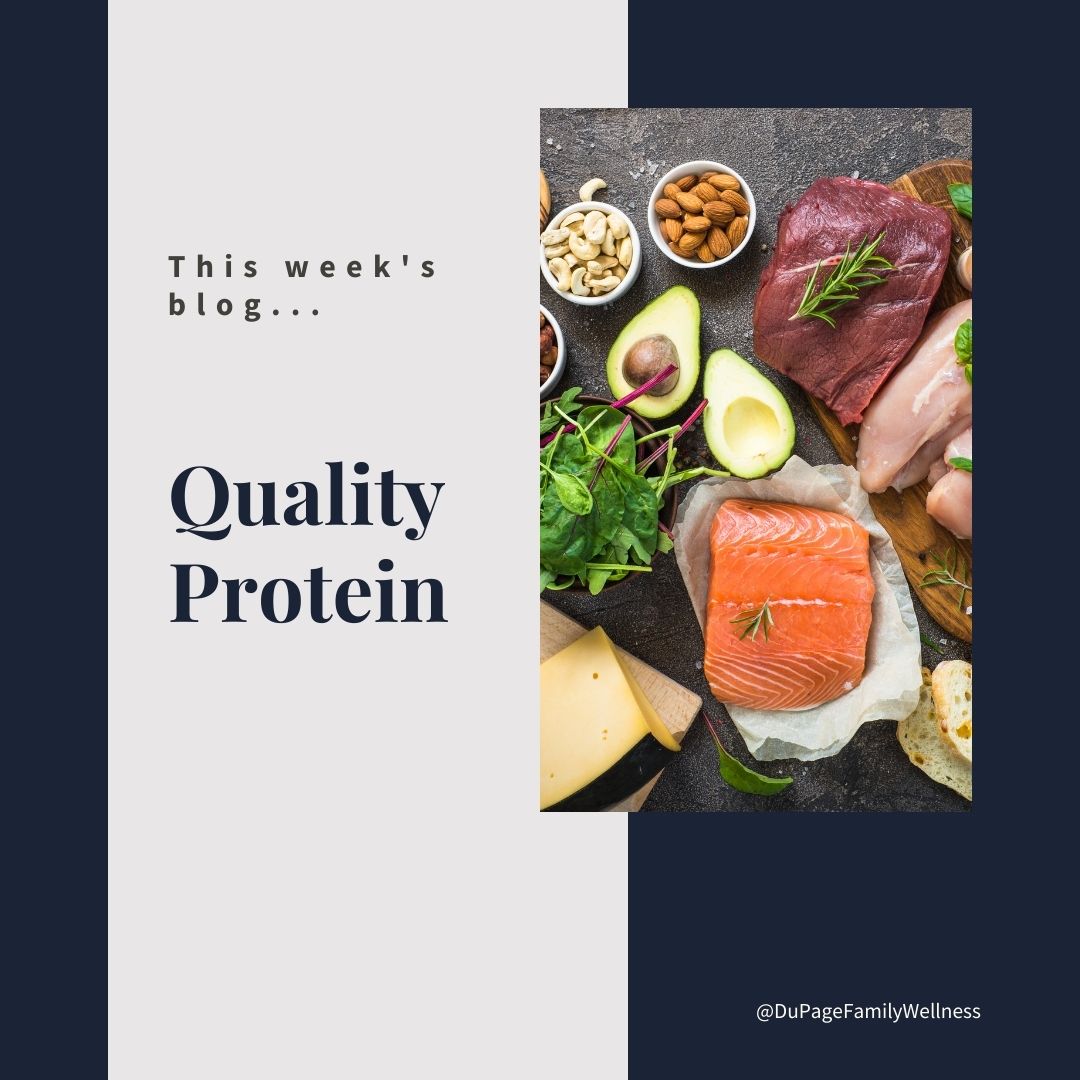 Did you know that every cell in your body contains protein? And that protein contains amino acids that are used to repair all the tissues in your body?
Did you know that every cell in your body contains protein? And that protein contains amino acids that are used to repair all the tissues in your body?
It’s true, your body needs protein to replenish itself. According to livestrong.com, protein helps “build muscles, produce new cells, regulate hormones and enzymes, heal wounds, and promote immune function”.
It is considered the most important macronutrient in building muscle, which can elevate your metabolic rate. And since protein also helps you feel full longer, it is great for those wanting to lose weight.
Since the body does not store protein, it depends on your diet to provide adequate amounts. Let’s look at the healthiest ways to get this protein.
Animal Protein
Meat can be a wonderful source of protein, but it is important to make sure you are getting quality meat! How the animal was raised, and what the animal did while it was alive, is extremely important. It is not just in the animals' best interest to be grass-fed or free-range, it has a direct impact on your health as well.
A study done by Mother Earth News compared eggs from free-range chickens with those produced commercially. It found that free-range eggs had:
- 2/3x more Vitamin A
- 2x more Omega-3
- 3x more Vitamin E
- 7x more Beta Carotene
In addition, grass-fed beef also has been found to contain higher levels of vitamins, antioxidants, and anti-inflammatory Omega 3 fatty acids when compared to conventional beef.
What about Plant Proteins?
While plants contain many necessary nutrients, they are not considered a complete protein because they lack one or more of the essential amino acids. It is possible to get the nutrients you need without eating meat, but it takes care to make sure you are getting everything you need. Plants contain compounds like oxalates and phytates which hamper your body's ability to absorb key minerals like zinc, magnesium, calcium, copper, and iron. Additionally, the vitamins in plants are often found in less active and less bioavailable forms.
Read more ...
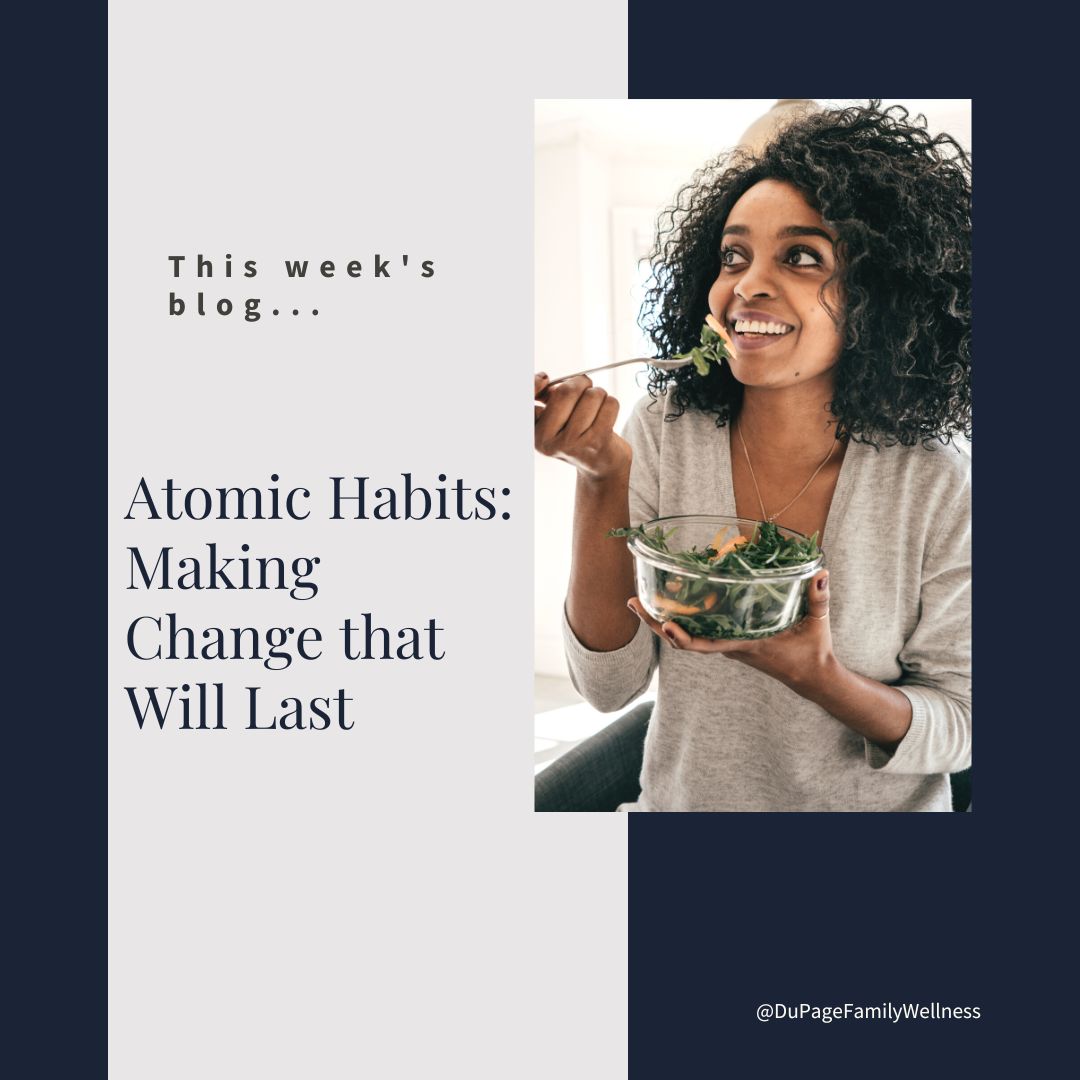 Have you ever wanted to start a habit and failed miserably? Perhaps you didn’t have the motivation to get started. Perhaps you started and didn’t keep up with it. Either way, it can be quite frustrating. You know what you want to do and ask yourself why you aren’t doing it.
Have you ever wanted to start a habit and failed miserably? Perhaps you didn’t have the motivation to get started. Perhaps you started and didn’t keep up with it. Either way, it can be quite frustrating. You know what you want to do and ask yourself why you aren’t doing it.
On the other hand, there may be bad habits that you want to break but continue to struggle with. You may wonder why it is so hard to stop doing things that you know are unhelpful for your goals even when you consciously try to change these habits.
I recently read the book Atomic Habits by James Clear. In it he discusses the process we go through to form habits, breaking it down in what he called “the habit loop.”
Let’s look at this cycle and see how we can use it to our advantage.
Overview of the Cycle
According to Clear, all habits are formed by the promise of reward through a four-step process called the habit loop. This loop consists of a cue, desire, response, and reward.
Our brains continually scan our environment for information. When the information presented predicts a reward Clear calls it a “cue.” Once the cue is noticed, a “craving” may happen where your desire of wanting the reward builds.
Finally, if the craving gives you enough motivation, it’s time for the “response.” The response is simply what you do to satisfy the craving. But we aren’t finished there, in order for a habit to be formed you must actually experience the “reward” in a satisfying way.
The final step in the habit cycle is just as important as the first. Without experiencing the “reward,” the habit will not stick. In fact, without each of these steps, a habit will not be formed.
As the loop is repeated over time, the cue is associated with the reward. This begins the cycle again and eventually, a habit will form. If any one of these steps is missing, the loop will not be completed and a habit will not form.

Read more ...
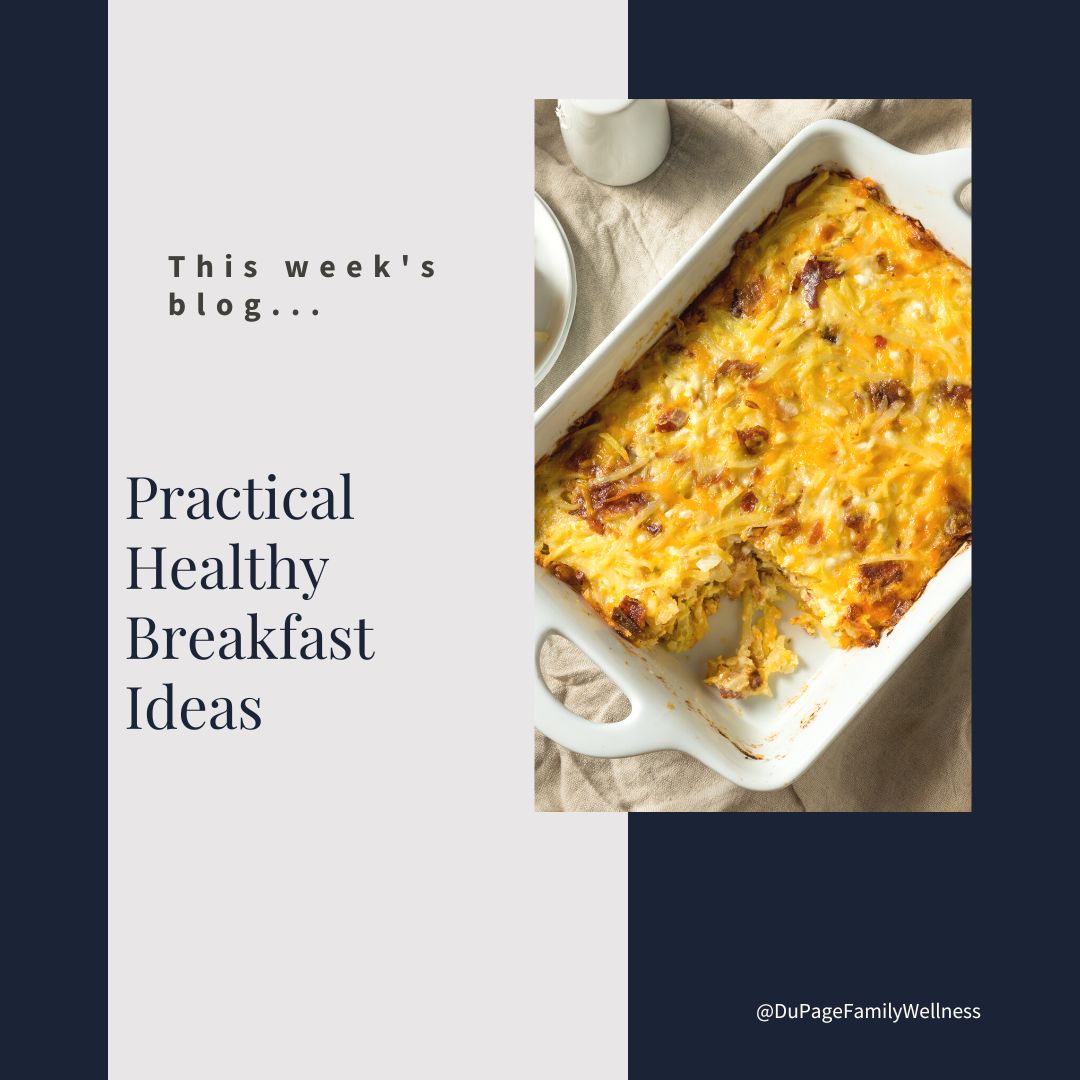
Did you grow up on Captain Crunch and Lucky Charms? If so, you may have changed this if you’ve decided to eat healthy. Now you may opt for Special K, Shredded Wheat, Raisin Bran or oatmeal, but what if I told you that those options are not that much healthier than the sugar cereals you grew up on?
If you read the ingredient list on any cereal box, it will likely include some form of added sugar, along with 20-30 ingredients. Many of these ingredients you may not be able to pronounce and they would not be considered “real food.” This is true of most “healthy” cereals as well.
Cereal and oatmeal primarily contain carbohydrates. It converts to glucose (sugar), giving you a surge of energy that only lasts for a couple of hours. To avoid the crash that follows this quick energy, breakfast should include long-burning fuel sources provided by proteins and fats.
Let’s look at some great options that will keep you full till lunch!
Leftovers
Leftovers from the night before can make a great breakfast. It’s easy and fast on a busy morning and hopefully contains lots of nutrition. While it may be unconventional, having leftovers is a good way to start the day.
Banana Pancakes
Two-ingredient Banana and Egg Pancakes are a great way to start the day. They are a delicious choice made from natural real-food ingredients and contain a protein to balance the fruit. You can make them ahead of time and store them for a couple of days in the refrigerator. Serve them with butter to add a healthy fat, and top with blueberries or strawberries for an extra bit of taste.
Breakfast Cups
Ham and Egg Breakfast Cups are a favorite simple delicious breakfast idea that can be made ahead of time. Once you are familiar with this recipe, you can play with it adding different meats and veggies to your liking.
Smoothies
Breakfast Smoothies can be made quickly and easily eaten on the go. They can provide a healthy mix of real food ingredients. You can add a scoop of protein powder and it will last you even longer.
Read more ...
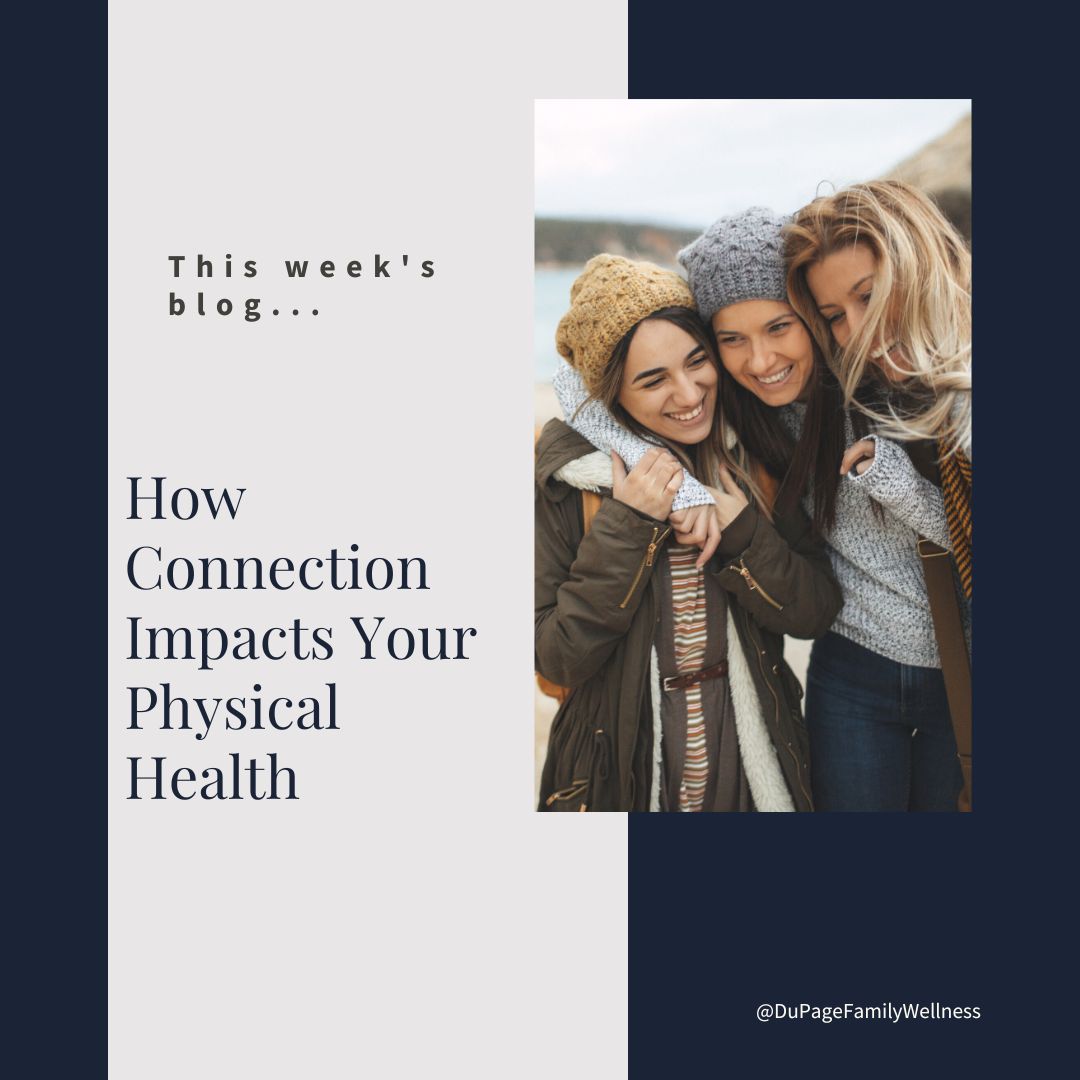 Enjoying social connections is more important for our health than most people realize! In fact, it can directly impact not only your mental health but your physical health as well!
Enjoying social connections is more important for our health than most people realize! In fact, it can directly impact not only your mental health but your physical health as well!
While most people think eating well, getting adequate movement, refraining from smoking, and limiting alcohol are the most important things you need to do to stay healthy, research shows that meaningful connection is extremely important too.
In a culture obsessed with hard work and accomplishments, social connections can feel like a luxury reserved for when the real work is done. But if we are truly putting our health first, connection is of utmost importance for both our physical and mental health.
Let’s look at some research that may lead you to add social connections to your list of healthy habits!
Social Connections Impact on Physical Health
It’s not hard to believe that those who feel more connected with others tend to have higher self-esteem, greater levels of empathy, and struggle less with anxiety and depression. But the extensive impact on physical health may come as a surprise to many.
According to Dr. Emma Seppala, the American Association for the Advancement of Science published a study that found that “a lack of social connection is a greater detriment to health than obesity, smoking, and high blood pressure.” A lack of social connections is actually linked to obesity levels, inflammation, and hypertension.
The health community needs to recognize the importance of connection as the healthy habits it is. When you look into the research, you will understand how crucial these connections are.
Show me the Research
Research done by Housekarl, Landis, and Umberson found that “studies… consistently show increased risk of death among persons with a low quantity, and sometimes low quality, of social relationships.”
Read more ...
 It’s been nine months since “Overcoming Mediocrity” was first published. It’s weird to think that I am a published author. I was honored to share the story of discovering my passion along with 20 other women of influence.
It’s been nine months since “Overcoming Mediocrity” was first published. It’s weird to think that I am a published author. I was honored to share the story of discovering my passion along with 20 other women of influence. 

 Did you know that every cell in your body contains protein? And that protein contains amino acids that are used to repair all the tissues in your body?
Did you know that every cell in your body contains protein? And that protein contains amino acids that are used to repair all the tissues in your body?  Have you ever wanted to start a habit and failed miserably? Perhaps you didn’t have the motivation to get started. Perhaps you started and didn’t keep up with it. Either way, it can be quite frustrating. You know what you want to do and ask yourself why you aren’t doing it.
Have you ever wanted to start a habit and failed miserably? Perhaps you didn’t have the motivation to get started. Perhaps you started and didn’t keep up with it. Either way, it can be quite frustrating. You know what you want to do and ask yourself why you aren’t doing it.
 Enjoying social connections is more important for our health than most people realize! In fact, it can directly impact not only your mental health but your physical health as well!
Enjoying social connections is more important for our health than most people realize! In fact, it can directly impact not only your mental health but your physical health as well!